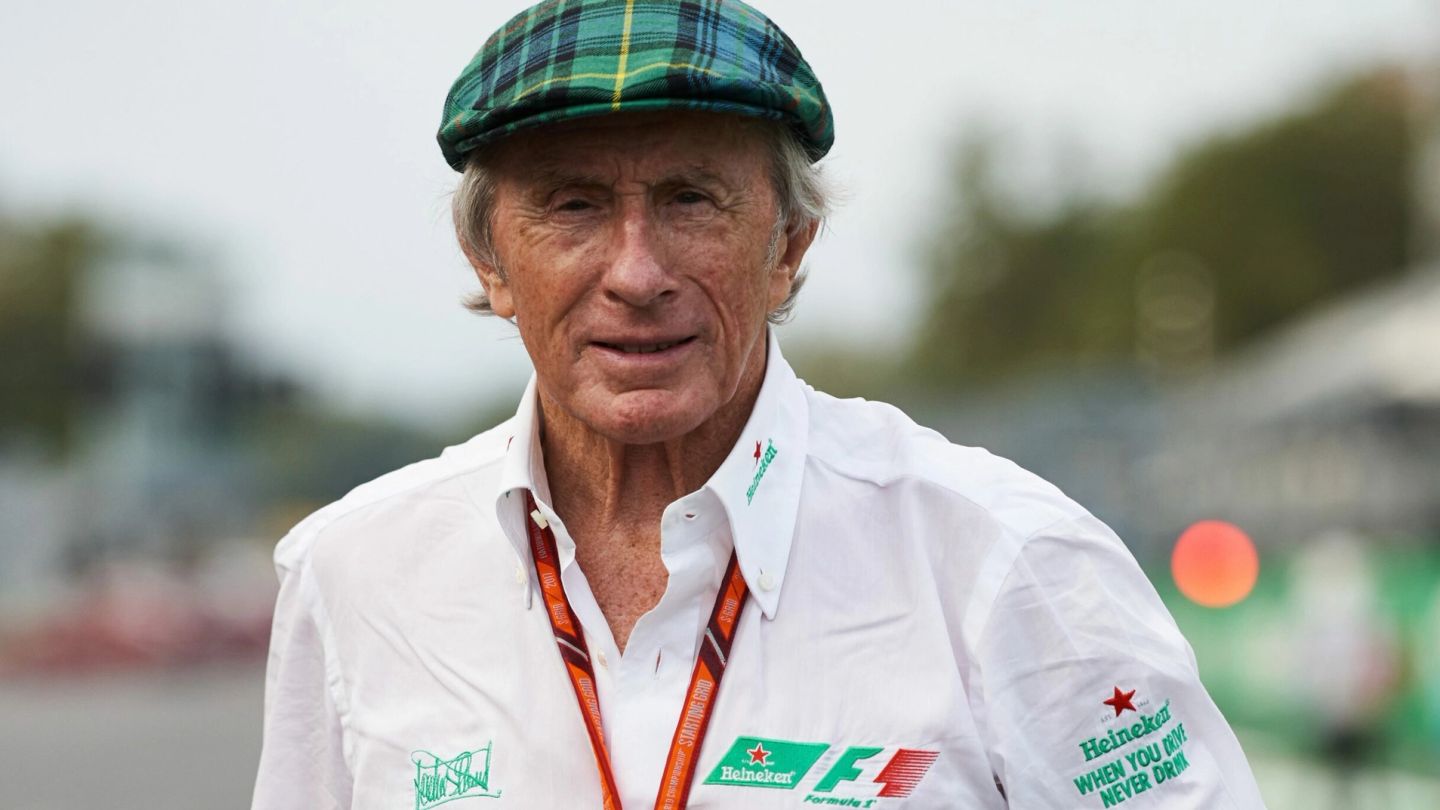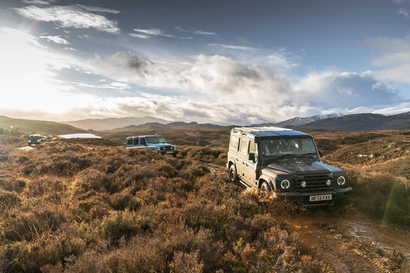

Words: Jonathan Wells
Last weekend, Gentleman’s Journal descended on a drizzly Monza to watch the 2017 Italian Grand Prix with racing legend Sir Jackie Stewart. Now the oldest living World Champion, the Scotsman recently became an ambassador for Heineken – the lead sponsors of the Italian race – and was on hand to talk responsible driving, the future of the sport, and who he sees himself in in the most recent crop of racers.
It’s pretty wet out there right now. What’s going through the minds of the racers?
In this rain, the extra power that the Mercedes engine has, for example, is not going to give any advantage against the Red Bull, the Renault or the Ferrari. So this rain levels out the vehicles, and puts more weight on the talents of the driver, which makes better fun for the spectators. They don’t make so many mistakes in the dry, so it’s absolutely a good thing – apart from maybe the aquaplaning…
You sound happy about the rain making this race a level playing field. Do you feel that F1 has shifted from a sport to a science in recent decades?
Yes and no. There has been considerably more technology introduced into the sport, but if you think back to the twenties and thirties, when teams like Mercedes Benz and Autounion were competing, up through the Maseratis and Ferraris and onto the Coopers and Lotus, the race for technology even then was as important as the race for finding the perfect driver.
The race for technology even then was as important as the race for finding the perfect driver
So I think the sport is better today that it was in the past – especially in terms of mortality – and it’s still got glamour and colour and excitement. But now it gets to more people.
You once made a film with Roman Polanski, and that really shows how much the sport has changed. When was the last time you saw that?
Weekend of a Champion. Roman Polanski was a good friend before that, and he was a keen driver himself. He used to come with me to many races, and one day he just said ‘why don’t we make a movie?’ And, I mean, it’s Roman Polanski – he’d done Rosemary’s Baby and Chinatown – so I had to say yes.
He called it a docudrama, and we did it in Monaco in 1971. And, because it was Roman Polanski, and he was there filming me, I won the race. It was a big deal for him to be following me, literally living with me and Helen for the whole weekend. And the amount of footage that ended up on the floor was huge, because he did just film the entire weekend. It’s still around – you can get it on DVD now.
Monza as an event is a highlight of the Formula 1 calendar. Why is this, and what does the track mean to you on a personal level?
I think it’s the most exciting Grand Prix of the year, and that’s because of the fans. The Italians in Monza are even more Italian than they would be in, say, Imola. Somehow or other, perhaps because of its history or the number of big names that have won here, Monza surely comes out on top. And this was where I had my first ever Grand Prix win, which obviously makes it very special for me.
I won my first World Championship here too, as it happens – and two of my World Championship wins were decided in Monza. So, for me, it’s a very important place.
When you were roaring around the track, do you think the sport was more exciting?
I think there was more glamour in those days. There was more access to the paddocks, for example – so you had a lot more pretty girls coming around. And apparently there were good looking guys as well – not that I ever saw any of them! I think it was more glamorous, I think it was a bit more colourful – but I think today is better.
I think it was more glamorous, I think it was a bit more colourful - but I think today is better
The sport is safer, the crowds are not necessarily bigger, usually smaller in fact as there was no television to begin with back then. Today you get whole channels and satellite television dedicated to Formula 1. And there’s more to cover. Formula 1 has 20 races today, but in my day we only had 11. But, while it could be considered a more global sport today, we used to race in Argentina and South Africa – places they no longer race today.
So it’s changed, but it’s the same in many ways.
One of the ways the sport has changed is safety. You’ve recently become a Heineken ambassador, so why are you so impressed with the work they’re doing?
I think Heineken coming into Formula 1 is one of the best things to ever happen to the sport. In my day, there was a business bible written by Freddie Heineken, and motorsport didn’t appear anywhere in that bible. But there wasn’t the power that television has today, and if it were not for television, I don’t think Heineken would be involved. It’s the biggest television sport in the world, bear in mind – bigger than the Olympics – so Heineken can use this exposure as a platform to deliver a social service.
To say ‘If you drive, never drink’ is a great statement for the company. And using actual drivers, like the advert I was in, is a great move – as that then elevates it above a brand advert and into a real message. Particularly for young people, I think it’s been as big a contribution to safety as when we began telling people it was compulsory to wear a seatbelt in a street car.
So, if Heineken had never come in, this message may never have happened. Understand that there have been many companies come in over the years into the sport, but none have invested in trying to teach people what they need to know. I hope it has a big effect on a global level.
You mentioned that there were races in your day that don’t exist today. Which would you like to see make a comeback?
I’d like to see a South African Grand Prix. And, although there’s a Brazilian one, I think an Argentinian event would be great for the heritage of the sport. Fangio was Argentinian, as was Gonzalez. And Argentina is a country of glamorous people – but unfortunately one without an economy strong enough to hold a Grand Prix at the moment. Hopefully, at some point in the future, we can get it back.
Looking both back and forward, do you see yourself in any of the racers today?
I see a young driver come along today – Verstappen for example – come along and look at an established driver like Alonso in the exact way I looked at Jim Clark. So I was the Verstappen of my time. But I was also the Vettel of my time, like Ayrton Senna and Nikki Lauda were the Vettels of theirs. I can see the same today, it’s like a mirror – all the personalities are very similar to how they were, and television has obviously projected the young up-and-comer more prominently than it did in my day.
I was the Verstappen of my time, but I was also the Vettel of my time
When I was driving, it was only results that counted. Today, even if you’re not doing well, you’re still very much in the public eye. It’s dramatised.
Finally, why do you think motor racing is the greatest sport in the world?
Everybody in the world drives a car. China. India. The United States. So the sport is everybody’s sport, because there are few people who don’t drive a car. Men or women, rich or poor, whether you get behind the wheel of a Ferrari or a Fiat, everyone can relate. So it’s better than any other sport in the world in that respect. It’s got glamour, excitement and danger – and these combine on the track to make it incredibly attractive.
Sir Jackie Stewart is the face of Formula 1 sponsor Heineken’s ‘When you drive, never drink’ campaign, promoting road safety and responsible drinking around the world. Find out more here.


